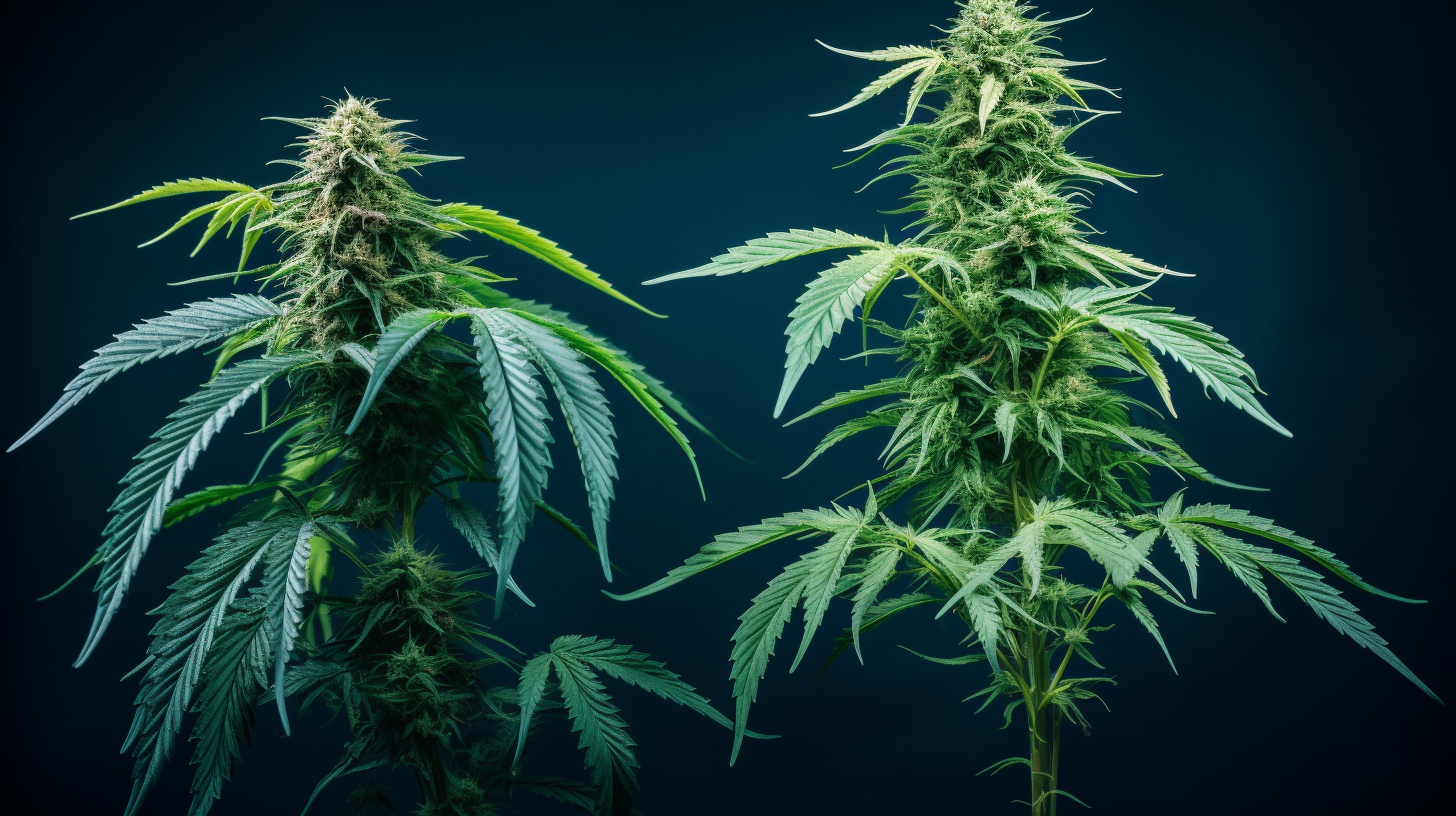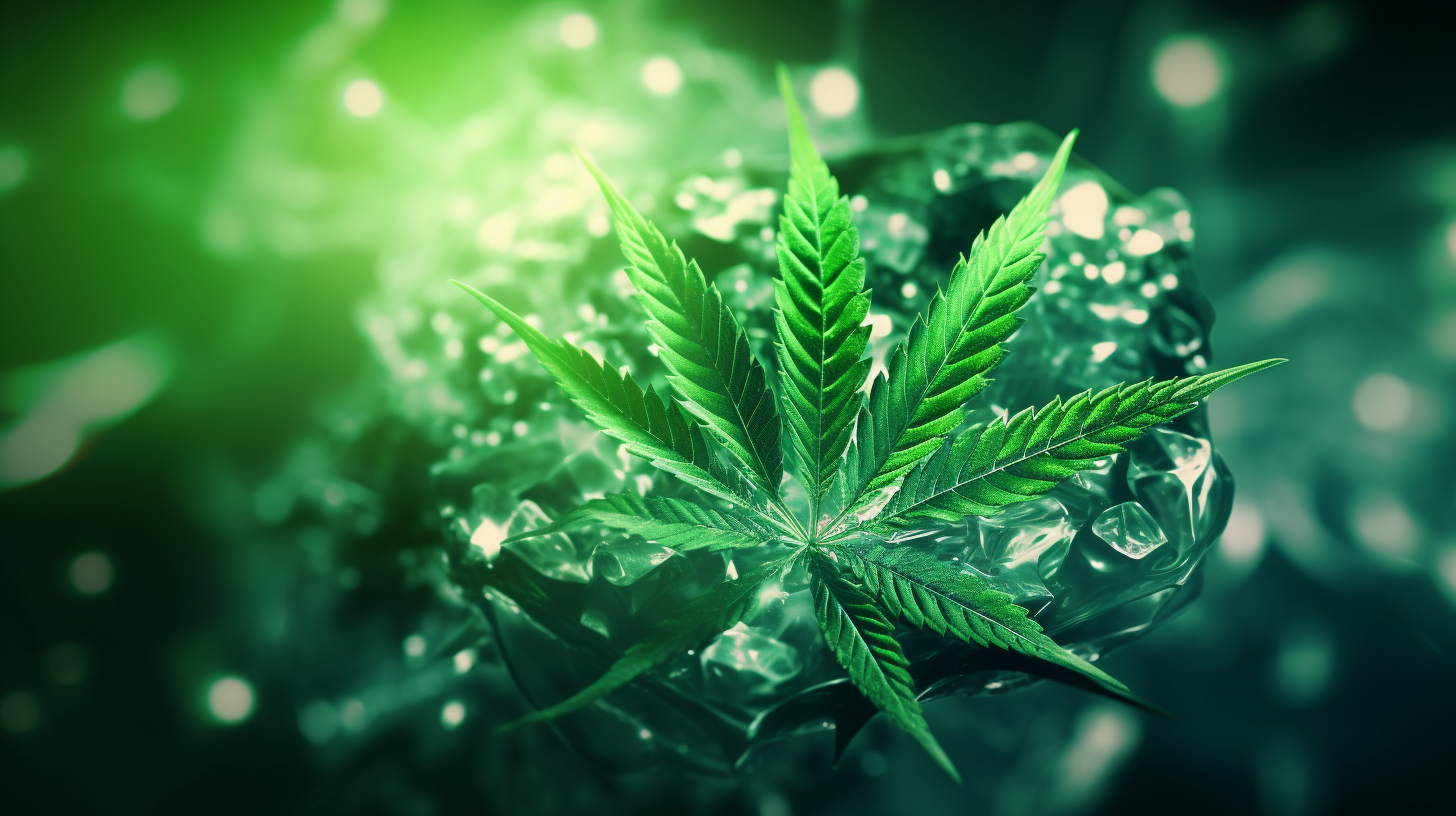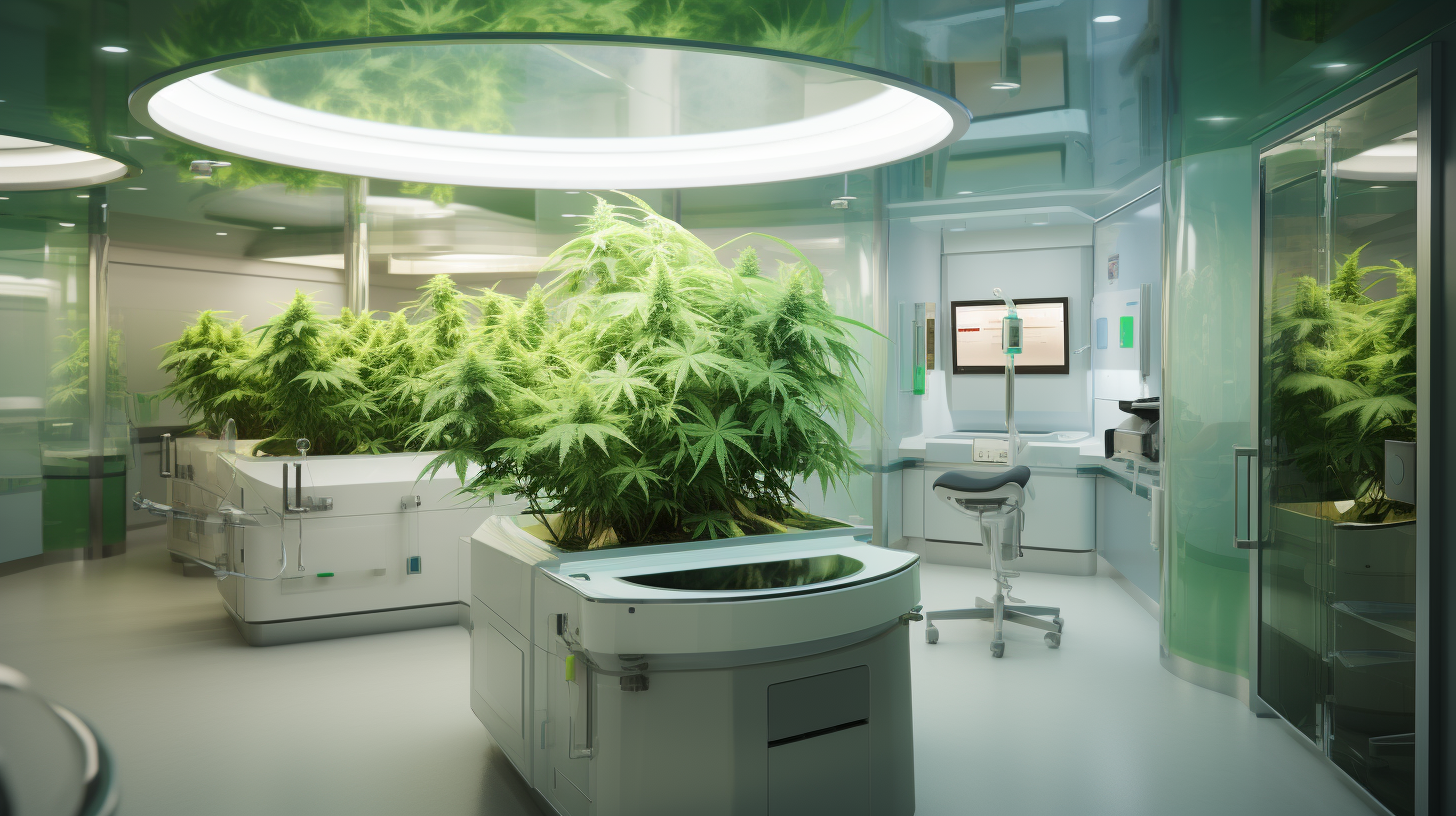
Are you ready to journey into the world of cannabis and explore the hidden secrets behind its two most prominent strains?
Indica and Sativa, like yin and yang, offer a vast array of differences that are waiting to be unveiled. Just as ancient explorers navigated uncharted territories, we will embark on a scientific expedition, shedding light on the key disparities between these captivating plants.
Much like the diverse origins and histories of humanity, Indica and Sativa have their own unique stories to tell. From their contrasting plant structures to their effects on the body and mind, we will delve into every aspect of these remarkable strains.
Brace yourself for an enlightening exploration of medical benefits, THC and CBD levels, as well as essential tips for growing and cultivating each strain.
Whether you seek relaxation or invigoration, understanding the differences between Indica and Sativa is crucial in selecting the right strain for your needs. So join us as we unravel this cannabis enigma; liberation awaits those who dare to venture beyond what they already know.
Key Takeaways
- Indica strains are known for their relaxing and sedating properties, while Sativa strains provide energizing and uplifting effects.
- Indica strains have higher levels of THC, while Sativa strains have higher levels of CBD.
- THC is the psychoactive component responsible for the “high” associated with cannabis use, while CBD does not produce psychoactive effects.
- When choosing a strain, it is important to consider factors such as THC and CBD content, terpene profiles, and individual sensitivities.
Origins and History of Indica and Sativa
You may think you know the origins and history of indica and sativa, but let’s dive deeper into their fascinating roots.
The cannabis Sativa plant has been cultivated for centuries, with its origins traced back to regions such as Central Asia and the Indian subcontinent. Hemp plants, a variety of cannabis Sativa, have been utilized by various civilizations for their versatile fibers.
On the other hand, indica strains are believed to have originated in the Hindu Kush mountain range in Afghanistan.
The distinction between these two species became more prominent during the colonial era when Europeans began exploring different parts of the world. Cannabis research has revealed that indica plants tend to be shorter and bushier than sativa plants. Furthermore, they contain higher levels of naturally occurring compounds called cannabinoids, known for their therapeutic effects.
Understanding the origins and history of indica and sativa is crucial in today’s cannabis industry. By unraveling this knowledge, we can make informed choices about which cannabis plants best suit our needs and desires for liberation from various ailments or simply relaxation.
Plant Structure and Appearance

Get ready to enter a world of botanical diversity where towering giants with wide, lush leaves meet slender beauties adorned with delicate, feathery foliage.
When it comes to the cannabis plant, its structure and appearance can vary significantly between indica and sativa strains. Indica plants tend to be shorter and bushier, with broad leaves that are darker in color. On the other hand, sativa plants are typically taller and have thinner leaves that are lighter in shade.
These differences in plant structure also contribute to variations in their chemical composition. Indica strains often possess a high level of delta-9-tetrahydrocannabinol (THC), which is responsible for the psychoactive effects commonly associated with cannabis use. Sativa strains, on the other hand, generally contain lower levels of THC but higher amounts of other naturally occurring compounds like cannabidiol (CBD).
Understanding these distinctions is crucial when considering the therapeutic benefits of different cannabis products and navigating state and federal laws regarding medical marijuana.
Effects on the Body and Mind
Step into the world of cannabis and discover how it can impact both your body and mind. When it comes to the effects on the body, delta-THC is the compound responsible for the psychoactive effects commonly associated with cannabis use. This compound interacts with receptors in the brain, leading to a range of experiences such as relaxation, euphoria, and altered perception.
One potential benefit of cannabis is its ability to provide pain relief, particularly for chronic pain conditions. However, it’s important to note that there can be adverse effects too, including impaired memory and coordination. Additionally, cannabis has intoxicating effects which may not be suitable for everyone.
In terms of its impact on the mind, cannabis can have both potential benefits and risks. For recreational use, it can enhance mood and induce feelings of relaxation or creativity. However, excessive or prolonged use may lead to negative psychological effects such as anxiety or paranoia in susceptible individuals.
On the other hand, cannabis has been used for medicinal purposes as well due to its potential therapeutic properties in managing symptoms related to various health conditions.
Overall, while cannabis can offer potential benefits like pain relief and mood enhancement when used responsibly, it’s crucial to consider both its potential risks and individual differences before incorporating it into your lifestyle.
Medical Benefits and Uses

With its potential therapeutic properties, cannabis has emerged as a surprising ally in managing various health conditions. The cannabinoids found in cannabis have been shown to offer relief for a range of medical conditions, including chemotherapy-induced nausea.
Both indica and sativa strains contain significant amounts of these cannabinoids, making them valuable options for patients experiencing recurring nausea. However, the specific effects may vary between the two types.
Indica strains are known for their relaxing and sedating properties, which can be beneficial for those seeking relief from pain or insomnia. Sativa strains, on the other hand, tend to have more uplifting and energizing effects that may be helpful for individuals dealing with mood disorders or fatigue.
Additionally, full-spectrum CBD products derived from both indica and sativa strains provide a wider range of therapeutic benefits due to their inclusion of delta-9 THC along with other cannabinoids and terpenes.
THC and CBD Levels
If you’re looking for a cannabis strain that suits your needs, it’s important to understand the levels of THC and CBD present. THC and CBD are naturally occurring compounds found in cannabis plants. THC is the psychoactive component responsible for the ‘high’ associated with marijuana use. It is important to note that high levels of delta-9-tetrahydrocannabinol (THC) can cause impairment and may result in a positive drug test.
On the other hand, CBD does not produce psychoactive effects and has been studied for its potential therapeutic benefits.
Scientific research has shown that different strains of cannabis can have varying levels of THC and CBD. Hemp-derived products legally available at the federal level contain less than 0.3% THC, making them non-intoxicating.
When choosing a strain, consider your desired effects and any potential risks or legal implications associated with higher THC products. It’s always recommended to consult with a healthcare professional before starting any cannabis use, especially if you have a history of cannabis use disorder or are subject to drug testing.
In addition to THC and CBD, there are many other cannabinoids present in cannabis that may contribute to its effects. Further research is needed to fully understand how these compounds interact and their potential benefits or risks when used therapeutically.
Aromas and Flavors
One of the most captivating aspects of cannabis is the wide range of aromas and flavors it offers, reminiscent of a bouquet of fragrant flowers and a medley of delectable fruits.
When comparing indica and sativa strains, their differences in aromas and flavors are quite distinctive. Indica strains tend to have a strong earthy scent with hints of musk and spice, while their flavors can be rich, woody, and even sweet at times.
On the other hand, sativa strains often exude a more uplifting and citrusy aroma, with undertones of pine or tropical fruits. Their flavors can be zesty, tangy, or even herbal.
These variations in aromas and flavors contribute to the unique experiences offered by indica and sativa strains, allowing individuals to explore different tastes that align with their preferences for liberation in cannabis consumption.
Growing and Cultivating Indica and Sativa Strains

Now that you’ve learned about the different aromas and flavors of indica and sativa strains, let’s dive into the fascinating world of growing and cultivating these plants. Whether you’re a seasoned cultivator or just starting out, understanding the key differences in growing indica and sativa strains is crucial for achieving optimal results.
Here are four essential points to consider:
- Delta-THC Variation: Indica strains tend to have higher levels of delta-9-tetrahydrocannabinol (THC), which is responsible for the psychoactive effects associated with marijuana use, while sativas generally contain lower amounts.
- Dry Weight Analysis: The dry weight of harvested buds can vary significantly between indica and sativa plants due to their distinct growth patterns and genetic makeup.
- Medicinal Potential: Both types offer potential health benefits, such as pain relief for multiple sclerosis patients or increased appetite stimulation for those undergoing chemotherapy. However, it’s crucial to consult with healthcare professionals before using marijuana-derived products.
- Cultivating Hemp-Derived Varieties: For those seeking hemp-derived CBD products without the risk of drug abuse or increased THC levels, focusing on cultivating specific hemp varieties may be more suitable.
By understanding these nuances in growing and cultivating indica and sativa strains, you can make informed decisions that align with your goals while remaining conscious of potential risks associated with marijuana use.
Popular Strains in the Indica Category
Let’s explore some of the most popular indica strains that have captivated cannabis enthusiasts with their unique characteristics and effects.
Indica strains are known for their relaxing and sedating properties, making them ideal for those seeking stress relief or help with sleep. One of the key differences between indica and sativa strains is the level of delta-9-tetrahydrocannabinol (THC) present. Indica strains tend to have a higher level of delta-9-THC compared to sativa strains.
Delta-9-THC is the compound responsible for the psychoactive effects commonly associated with cannabis use. While federally legal THC levels in cannabis products must be below 0.3%, indica strains can contain much higher levels, often reaching up to 30%.
According to studies published in J Cannabis Res and the British Journal of Pharmacology, this difference in THC content may contribute to the varying effects experienced by users. Furthermore, research from the National Institutes of Health and public health agencies suggests that these high THC levels can increase the risk of adverse reactions, especially when consumed in large quantities or without proper moderation.
Therefore, it’s crucial for consumers to understand how much THC is present in different indica strains before using them.
Popular Strains in the Sativa Category
Exploring the wide array of popular sativa strains will reveal their energizing and uplifting effects, making them a top choice for those seeking a creative boost or daytime productivity. Sativa strains are known for their ability to provide a cerebral high that promotes focus, motivation, and sociability.
One popular strain in this category is Sour Diesel, renowned for its potent aroma and invigorating effects.
Another well-loved sativa strain is Jack Herer, named after the famous cannabis activist and author. It offers a clear-headed high that enhances creativity and mental clarity.
If you’re looking for an uplifting strain with tropical flavors, Pineapple Express is a great option. Known for its sweet taste and energetic buzz, it can help elevate mood and stimulate productivity.
These popular sativa strains embody the essence of liberation by providing individuals with an invigorating experience that encourages exploration and productivity throughout the day.
Choosing the Right Strain for Your Needs

When it comes to selecting the right strain for your needs, finding one that fits like a puzzle piece can be as satisfying as discovering the perfect pair of shoes. The key to choosing the right strain lies in understanding its effects and how they align with your personal preferences and desired outcomes.
Sativa strains are known for their energizing and uplifting effects, making them ideal for daytime use or activities that require focus and creativity. On the other hand, indica strains are more relaxing and sedating, making them better suited for nighttime use or when you want to unwind and relax.
It’s important to consider factors such as THC and CBD content, terpene profiles, and individual sensitivities when making your choice. Remember, liberation comes from finding the strain that enhances your experience rather than limiting it.
Frequently Asked Questions
What are the legal implications of growing and cultivating Indica and Sativa strains?
Growing and cultivating indica and sativa strains can have varying legal implications depending on your location. It is crucial to research and understand the specific laws and regulations surrounding cannabis cultivation in your area to avoid any legal consequences.
Can Indica and Sativa strains be used interchangeably for medical purposes?
No, indica and sativa strains cannot be used interchangeably for medical purposes. Despite their similarities, each strain has unique chemical profiles that produce different effects on the body.
How do Indica and Sativa strains differ in terms of their effects on creativity and productivity?
Indica strains are known to promote relaxation and sedation, which may hinder creativity and productivity. On the other hand, sativa strains have uplifting effects that can enhance focus and stimulate creativity, making them more suitable for activities requiring mental engagement.
Are there any potential side effects or risks associated with using Indica and Sativa strains for medicinal purposes?
Using indica and sativa strains for medicinal purposes may have potential side effects, such as drowsiness or anxiety. It is important to consult with a healthcare professional to understand the risks and benefits of each strain for your specific condition.
Can Indica and Sativa strains be combined or mixed together to create hybrid strains with unique characteristics?
Yes, indica and sativa strains can be combined to create hybrid strains with unique characteristics. This allows for a wider range of effects and therapeutic benefits, providing a more personalized experience for users seeking liberation through cannabis.
Conclusion
Congratulations! You’ve now gained a deeper understanding of the key differences between indica and sativa strains. Armed with this knowledge, you can confidently navigate the world of cannabis and select the perfect strain for your needs.
Whether you’re seeking relaxation and pain relief or an energizing boost, there’s a strain out there waiting for you. So close your eyes and imagine yourself surrounded by lush green fields of indica plants or towering sativa trees, each offering their own unique benefits.
Embrace the power of nature and let it guide you towards finding your perfect cannabis experience.








